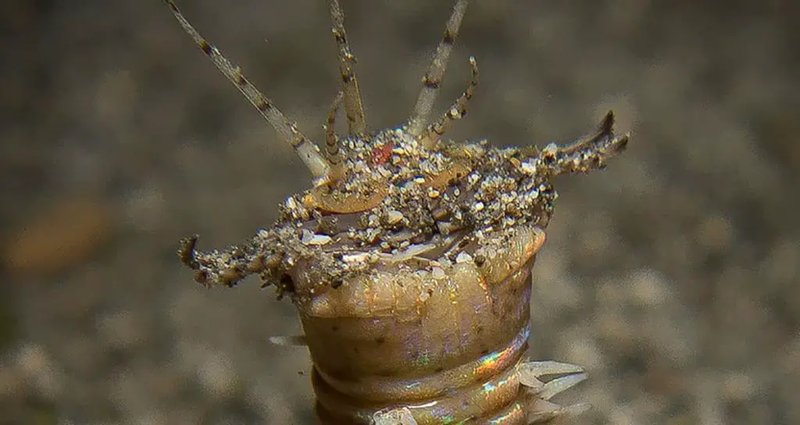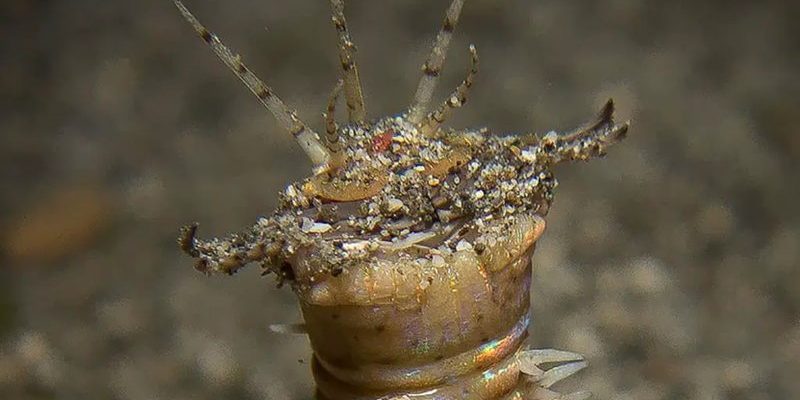
Imagine your aquarium as a cozy little community where fish and other aquatic life thrive. You’d want to keep that space safe and secure, especially if you’re adding a unique addition like a Bobbit worm. Whether you’re a novice or a seasoned fish keeper, knowing the risks these worms pose to your tank is crucial. So, let’s break this down in a way that’s easy to digest, like sharing insights over a cup of coffee.
What Are Bobbit Worms?
Bobbit worms, or *Eunice aphroditois*, are marine polychaete worms. They primarily inhabit the sandy bottoms of the ocean and are well-known for their unique hunting style. They bury themselves in the substrate, leaving only their jaws exposed, ready to ambush unsuspecting prey. When a fish swims too close, the worm springs into action, grabbing its meal with lightning speed. This makes them fascinating but also a bit intimidating as pets.
Not only do they have a unique hunting method, but Bobbit worms also have a vibrant appearance, often showcasing colors like green and blue. However, their beauty shouldn’t distract you from their predatory nature. Understanding how they behave is essential if you’re thinking about adding one to your aquarium setup.
Can Bobbit Worms Damage Tanks?
You might be wondering if Bobbit worms can actually damage your aquarium. The short answer is no; they typically cannot pierce through acrylic or glass. These materials are quite sturdy and are designed to hold up against various pressures, including any potential aggression from tank inhabitants. Bobbit worms don’t have the physical adaptations required to break through these materials, much like how a house cat can’t break down concrete walls.
However, while they can’t pierce your tank, it’s vital to remember that Bobbit worms need an appropriate environment to thrive. They can produce waste and create disturbances in the substrate, which might affect the overall health of your aquarium ecosystem. If you’re planning to keep one, you must ensure your tank is suitable, with enough space and the right conditions for both the worm and its tank mates.
Choosing the Right Tank Material
Now, let’s talk about tank materials a bit more. When setting up an aquarium, you often choose between acrylic and glass, each with its own pros and cons. Glass tanks are generally more scratch-resistant, which is great for long-term use. On the other hand, acrylic tanks tend to be lighter and offer better insulation, which can keep your water temperature stable.
Here’s a quick rundown of the two:
- Glass Tanks: Durable, scratch-resistant, and excellent for visibility.
- Acrylic Tanks: Lighter, better insulated, but can scratch more easily.
Both materials are safe from Bobbit worm attacks, so your choice will depend more on your specific needs and how you plan to set up your aquarium.
Setting Up for Bobbit Worms
If you decide to introduce a Bobbit worm into your aquarium, proper setup is essential. Start by ensuring your tank has plenty of substrate for the worm to burrow into. They thrive in sandy or fine-grained substrate, which mimics their natural habitat. Also, consider adding hiding spots or decorations that allow them to feel secure.
Here’s what to keep in mind while setting up:
– **Substrate Depth:** Aim for at least 4 to 6 inches of sand or fine gravel. This depth allows the worm to burrow comfortably.
– **Water Conditions:** Maintaining optimal water conditions is vital. Bobbit worms prefer slightly salty water with a pH level around 7.8 to 8.5.
– **Tank Mates:** Be cautious about tank mates. Some fish might be curious and try to investigate the worm’s burrow, potentially causing stress for the worm.
By creating a suitable environment, you’ll increase the chances of your Bobbit worm thriving in your aquarium.
Common Concerns and Misunderstandings
Many aquarium enthusiasts harbor concerns about Bobbit worms, especially about their predatory nature. It’s essential to separate fact from fiction. While they certainly can eat fish, they usually target weaker or smaller ones. If you have a well-balanced tank filled with healthy fish, the risk of a Bobbit worm causing havoc is significantly reduced.
Another common worry is that these worms could escape the tank. While Bobbit worms are slippery and can navigate through small spaces, as long as your tank is well-sealed and maintained, they’re unlikely to find a way out. Just make sure your tank lid is secure, and you should be good to go.
Bobbit Worms and Tank Health
Maintaining a healthy aquarium is a priority for any fish keeper. Bobbit worms can actually contribute positively to the aquarium ecosystem when kept in balance. They help with aeration of the substrate, which can promote beneficial bacteria and keep your tank clean.
However, overpopulation or poor tank management can lead to issues. Too many worms can cause excess waste, which can, in turn, affect water quality. Regular monitoring of your tank’s health, including parameters like ammonia, nitrate, and pH levels, helps maintain a balanced environment.
In summary, Bobbit worms are fascinating creatures that can be an exciting addition to your aquarium. They won’t pierce through acrylic or glass tanks, so your setup is safe from their predatory nature in that regard. However, creating a suitable environment and understanding their needs is crucial for keeping both your Bobbit worm and fish healthy.
So, if you’re intrigued by these unique worms, go ahead and explore the possibility of adding one to your underwater world. Just remember that every creature has its role in the ecosystem. With the right care and setup, you can enjoy the beauty of a Bobbit worm without compromising the safety of your aquarium. Happy fish keeping!

